
There are many more colored features in the sky than just rainbows. Some
involve water drops (this page) and others involve ice crystals (next page).

Rainbows are created by internal reflection(s) and refraction (making colors)
in raindrops.
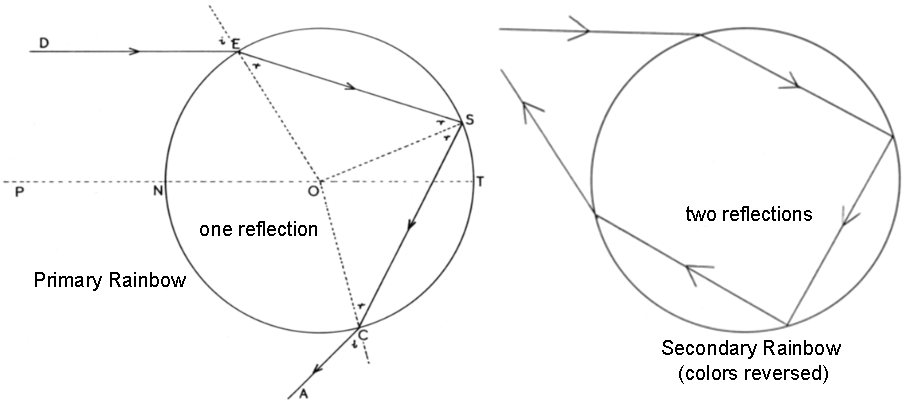
The primary rainbow is brighter on the inside, sometimes with extra greens and
blues.
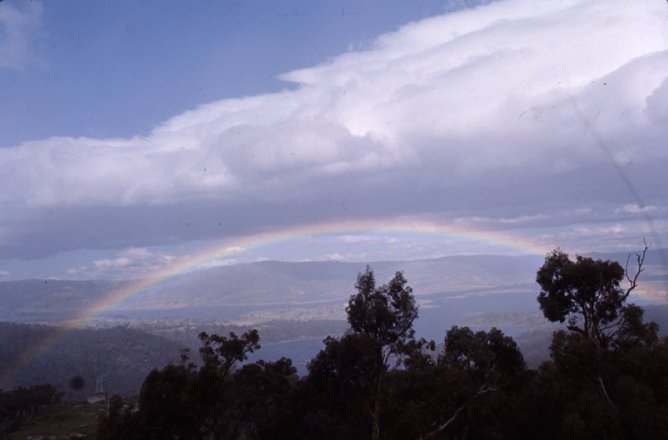
The scondary rainbow, outside the primary, has reversed colors.

The fog bow (under aircraft wing) is in the primary rainbow position but is
white because of much smaller cloud droplets. (A "glory" is the bull's eye
at the left, at the "anti-solar" spot where the shadow of the aircraft contrail
ends.)
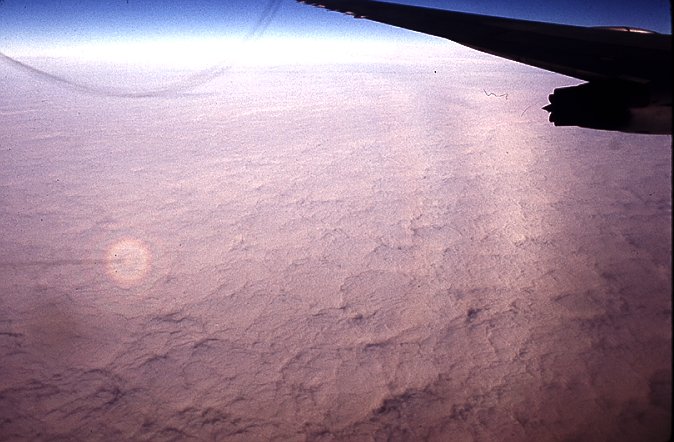
In this aerial photo looking straight down (at "nadir"), a sunglint reflects
off from calm water and the anti-solar spot reflects off of sandy ground on
the opposite side of nadir.
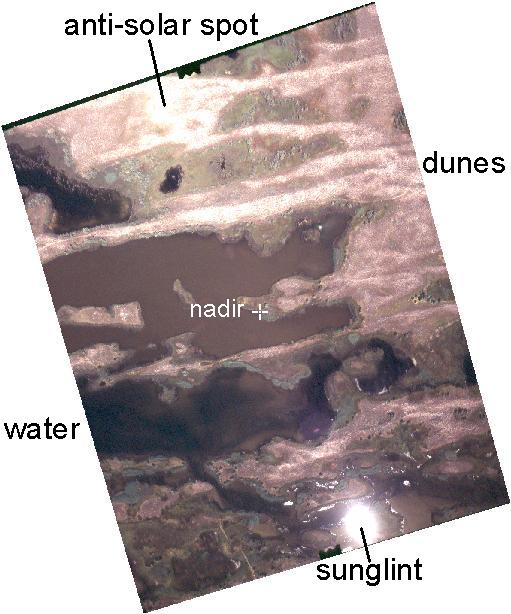
A sunglint can be spread out by ripples and waves on a water surface.

The next series of colored phenomena result from interference of optical
waves. Light intensity is doubled if close waves are in phase (constructive
interference) or zeroed if waves are exactly out of phase (destructive
interference).

There is a precise color sequence caused by interference colors. In this
color diagram the color sequence is on the left, as would be viewed in an ice
wedge of increasing thickness (certain minerals show the same sequence). If
such an ice wedge is viewed through a diffraction grating to make a spectrum,
there are black absorption bands seen in the visible part of the spectrum and
simulated in the ultraviolet and infrared parts. In the sky the color sequence
starts at the sun or moon for the "corona" or the anti-solar spot for the
"glory".
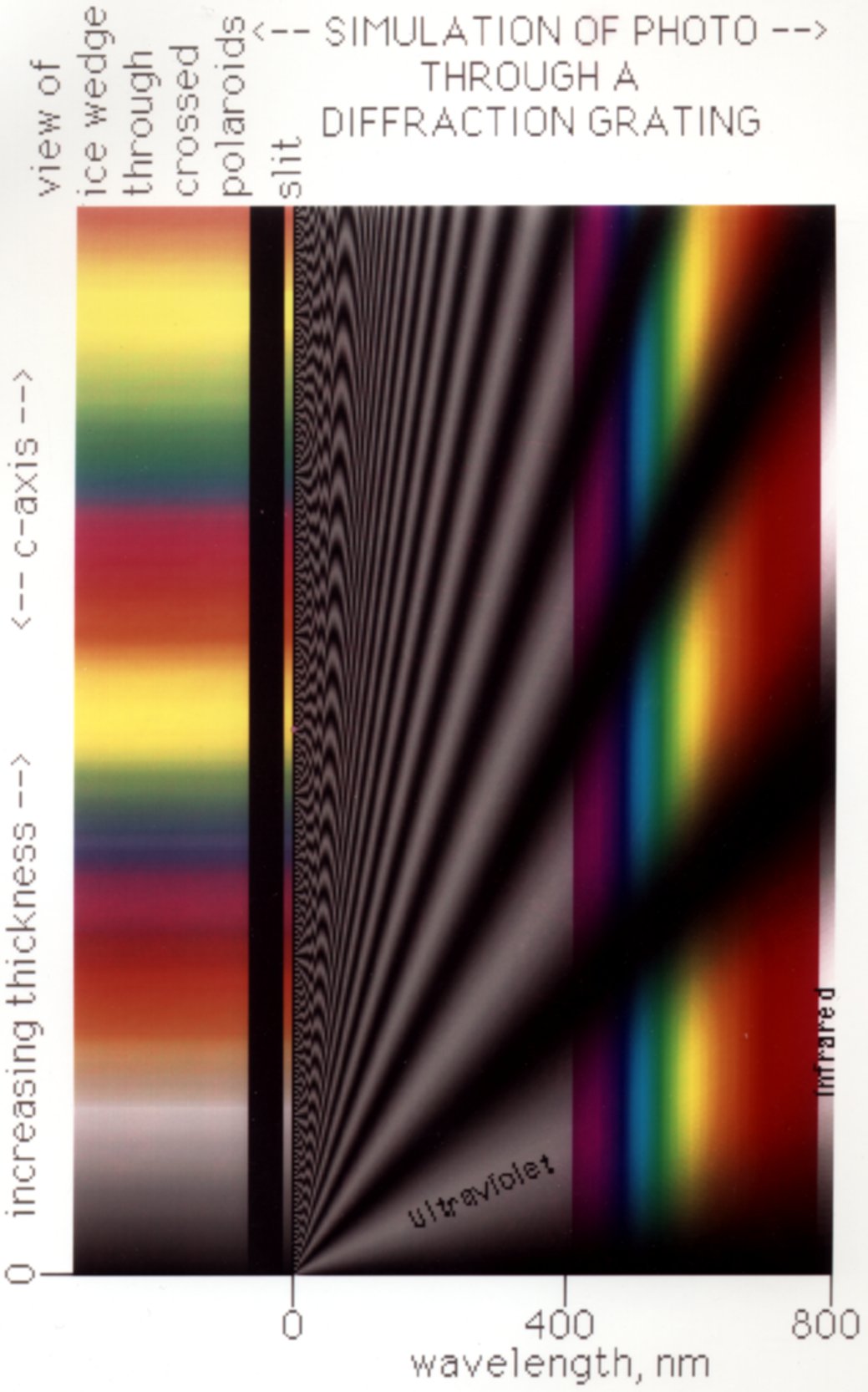
The glory appears about one's shadow position when looking down on a cloud of
liquid water droplets.
 (3 Feb 1991) [N 40 18' 15", W 110 47' 52"]
(3 Feb 1991) [N 40 18' 15", W 110 47' 52"]
In the background are snow covered hills. The diameter of the inner red ring
is inversely proportional to droplet size, here indicating very small cloud
droplets. The purity of colors indicates the uniformity of sizes.
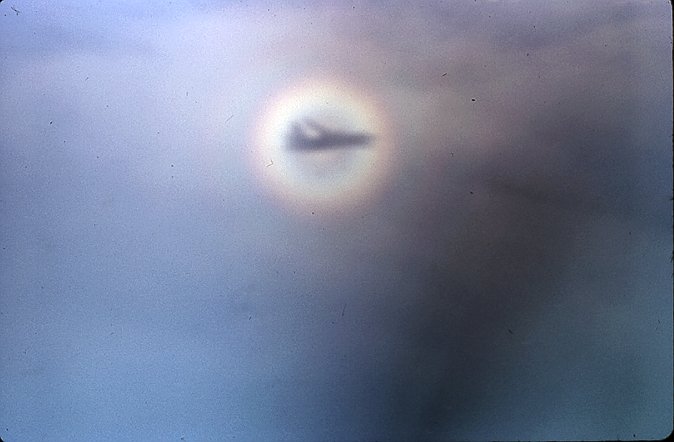 (Sep 1973)
(Sep 1973)
This view of a glory contains the airplane shadow (that of a Fokker Friendship
F-22) in a cloud just north of Tasmania, Australia, proving that it is an
anti-solar point phenomenon.
 (8 Jan 2007) [N 39 39' 15", W 85 49' 56"]
(8 Jan 2007) [N 39 39' 15", W 85 49' 56"]
This view of a glory near Shelbyville, Indiana, proves that there is a thin
liquid cloud in the scene, otherwise difficult to detect. It was taken with
the same lens as most of the other images. The size of the glory is the largest
illustrated, indicating the smallest droplet sizes.
 (Feb 1971)
(Feb 1971)
This scene (previously shown for the fog bow) was recorded with a wide angle
(28 mm) lens. The glory is at the left. The smallness of the cloud droplets
compared to raindrops makes the fog bow white rather than colored. Even so,
the droplets are larger than normal in order to create a visible fog bow.
(The aircraft wing and engine are of a DC-8.) The arc in the upper left is a
hair inside the camera. The picture was enhanced to bring out the bright
features.
The corona has the same color sequence about the sun or moon, but is
difficult to photograph. The color intensity decreases with radial distance
from the sun or moon so that the third red ring is seldom seen.
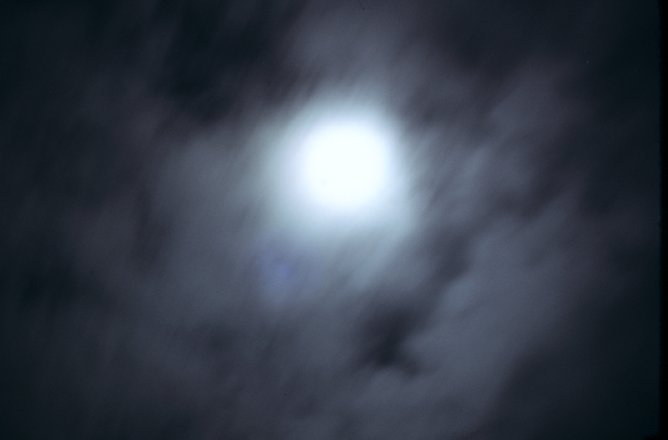
Irridescence is seen near the sun and moon at the edges of clouds with
extremely tiny cloud droplets. The optical geometry is the same as that for
the corona. Being farther from the sun or moon, the colors are more easily
recorded by photography.
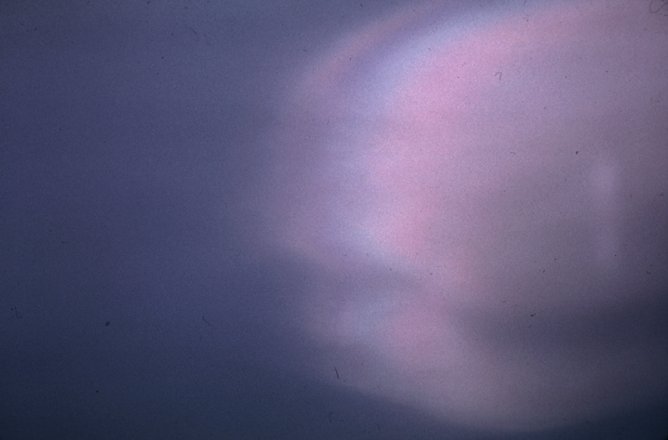
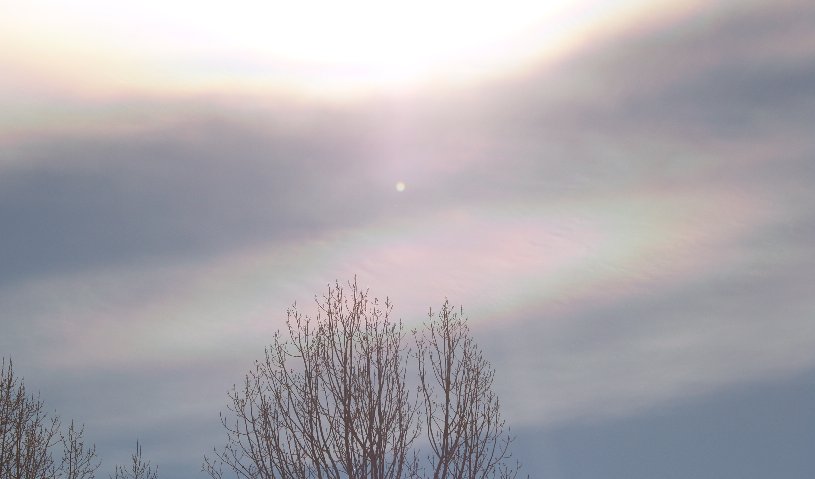
(The sun is above this view, not at the small center spot which is a
reflection within the camera lens system.)
Back, Next
Home,
sequence,
equipment,
clouds,
vapor growth,
snowstorm,
crystal growth,
cloud seeding history,
related topics,
ice optics,
trouble shooting